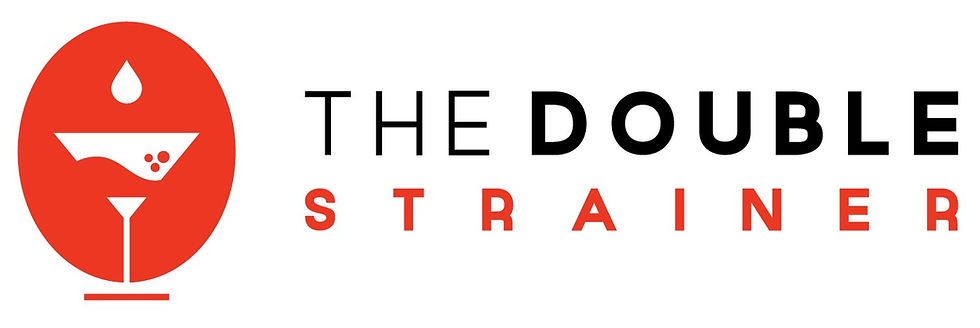Honey: A Study of Flavor, Texture, and Terroir
- infothedoublestrai
- Jul 29
- 4 min read
Updated: Sep 16

In contemporary mixology, where ingredients are selected not merely for their sweetness but for their depth, provenance, and aromatic potential, honey has earned a place of prestige. Far beyond a simple sweetener, honey is a botanical expression of terroir, seasonality, and floral diversity. For the modern bartender, understanding the different types of honey and their sensory profiles is key to crafting thoughtful, balanced, and expressive cocktails.
Why Honey Deserves Attention Behind the Bar
Unlike refined sugars or neutral syrups, honey brings layered complexity. Its natural composition—rich in fructose, glucose, acids, enzymes, minerals, and aromatic compounds—offers more than sweetness: it affects texture, mouthfeel, and even the perceived length of a drink on the palate.
When selected and applied intentionally, honey becomes a narrative ingredient. Its role shifts from functional to expressive, creating deeper connections between the drink’s identity and its ingredients.
Understanding the Major Types of Honey
Honey’s properties vary dramatically based on its floral origin. Each varietal has a distinct flavor, color, viscosity, and aromatic character that can either support or dominate a cocktail. Below are some of the most relevant types of honey for cocktail applications.
Acacia Honey
Flavor: Mild, floral, with soft vanilla notes
Color: Pale and almost transparent
Texture: Smooth and runny
Best used in cocktails with delicate spirits like gin or vodka
Clover Honey
Flavor: Sweet, clean, with grassy undertones
Color: Light gold
Texture: Medium-bodied
A versatile base for most applications, including syrups and foams
Wildflower Honey
Flavor: Variable depending on location and season; generally floral and mildly herbal
Color: Ranges from light amber to dark brown
Texture: Balanced
Ideal for bringing a sense of terroir to seasonal drinks
Buckwheat Honey
Flavor: Bold, malty, earthy, sometimes with bitter chocolate notes
Color: Very dark to black
Texture: Dense and sticky
Best used with aged spirits or smoky, stirred cocktails
Orange Blossom Honey
Flavor: Sweet with aromatic citrus-floral notes
Color: Light amber
Texture: Medium-bodied
A natural pairing for citrus-forward and tequila-based drinks
Chestnut Honey
Flavor: Bitter, nutty, tannic, with a woody edge
Color: Deep amber
Texture: Dense with a lingering aftertaste
A powerful addition to clarified cocktails or those using fortified wines
Manuka Honey (New Zealand)
Flavor: Earthy, resinous, slightly medicinal
Color: Creamy beige to dark brown
Texture: Thick and creamy
A bold and polarizing ingredient, best used with restraint
Other Noteworthy Varieties
Heather Honey: Aromatic and slightly bitter; excellent in Scotch-based cocktails
Eucalyptus Honey: Herbal and mentholated; pairs well with herbal liqueurs or digestifs
Sage Honey: Subtle and clean; useful for dry white spirit cocktails
Lavender Honey: Perfumed and floral; best used in small quantities to avoid overpowering
Recommended Honey Pairings in Classic and Signature Cocktails
While honey selection should always align with a cocktail’s overall structure and aromatic profile, some varietals lend themselves particularly well to specific drink styles. Below are pairing recommendations that maximize harmony and impact.
Bee’s Knees – Acacia honey
Light and floral, this honey supports gin botanicals without overwhelming them.
Gold Rush – Clover honey
A clean and neutral sweetness that lets bourbon take center stage.
Penicillin (and other smoky variations) – Buckwheat honey
Earthy and intense, perfect for highlighting smoky whiskies and ginger.
Whiskey Sour – Wildflower honey
Adds herbal nuance and seasonal character to a familiar sour format.
Tequila Daisy / Honey Margarita Twist – Orange blossom honey
Enhances both the lime and the bright, green notes of Blanco tequila.
Old Fashioned (honey variation) – Chestnut honey
Provides depth and bitterness, complementing oak-aged spirits.
Hot Toddy – Manuka or buckwheat honey
Both add robust flavor and aroma suitable for warm, comforting drinks.
Aperitivo Spritz or floral highballs – Lavender or acacia honey
Light, clean honeys that harmonize with bubbles and aromatic modifiers.
Sazerac or amaro-based drinks – Sage honey
Dry and lightly herbal, it integrates well with absinthe or botanical bitters.
Clarified milk punches – Heather or wildflower honey
Offers clarity of flavor and excellent integration into clarified formats.
Technical Considerations When Using Honey
Flavor intensity
Honey should never dominate the drink unless intentionally featured. Bolder honeys like buckwheat or chestnut demand balance, while lighter varieties such as acacia and clover can act as supporting players.
Solubility
Due to its viscosity, honey typically requires dilution into a syrup—commonly at a 1:1 or 2:1 ratio with water, tea, or other liquids—to ensure integration in cold applications.
Aromatic volatility
Honey’s aroma can evolve dramatically under heat, acidity, or oxidation. This must be considered in hot serves, clarified cocktails, or when working with citrus or carbonated elements.
Botanical synergy
Match the honey's botanical source to the cocktail’s structure. For instance, eucalyptus honey might elevate a menthol-forward amaro, while orange blossom honey can amplify citrus notes in tequila or rum.
Conclusion: Honey as a Narrative Ingredient
Honey is not just a sweetener—it is a sensory archive of flowers, climate, and land. In the hands of a thoughtful mixologist, it becomes an ingredient of storytelling, structure, and style. Understanding the distinctions among honey types opens new creative pathways and deepens the emotional resonance of a drink.
Rather than treating it as a monolithic sugar substitute, consider honey as a tool of nuance and terroir—one that invites the guest into a layered and intentional experience, one sip at a time.
For more articles about homemade ingredients click HERE
and stay up to date subscribing to our newsletter HERE







Comments